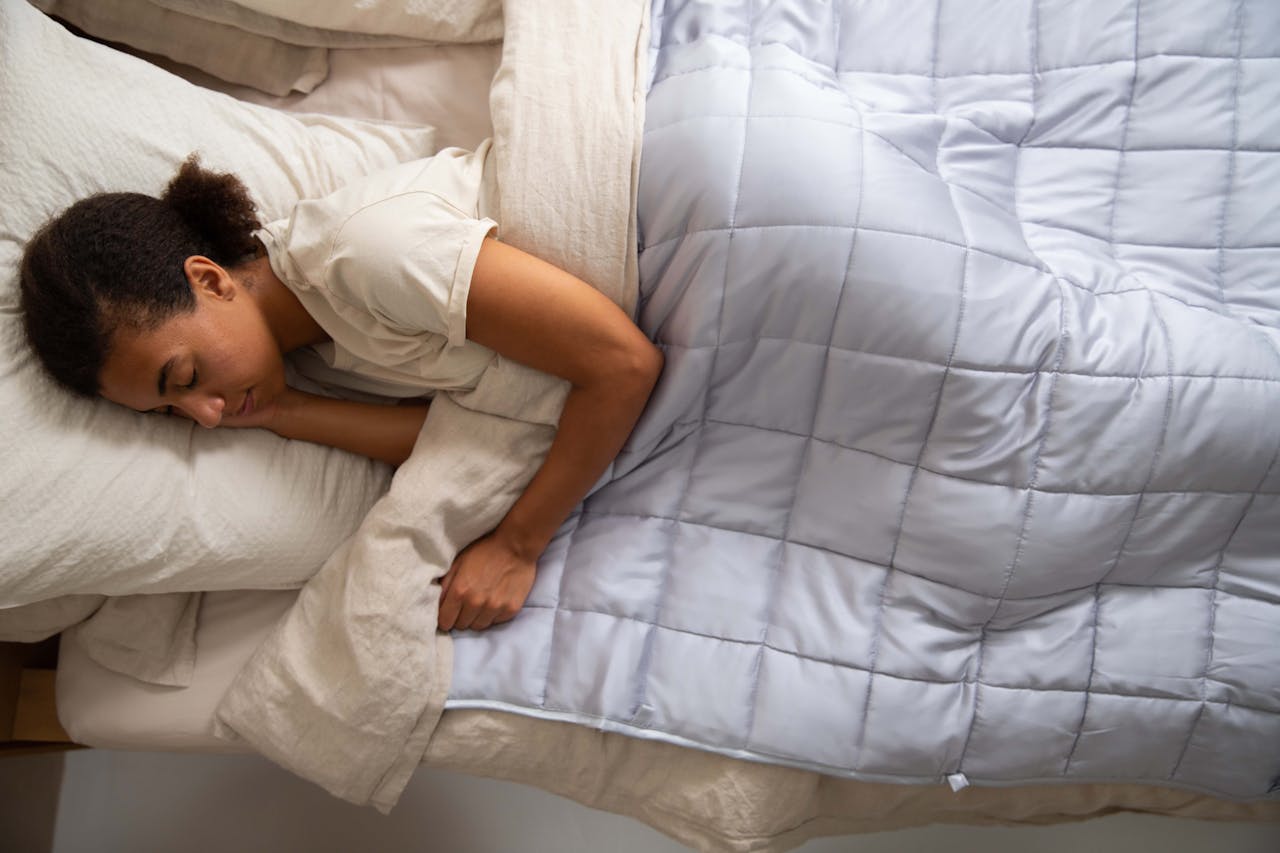
Weighted Blankets - Are They Worth the Hype?
I don’t know why I’m focused on sleep again.
Perhaps because it’s so incredibly important, and I know people struggle to get adequate sleep every night.
And while I’ve written a series on sleep before, there were aspects of getting a good night’s sleep that I didn’t cover in it.
One of those being weighted blankets.
Weighted blankets have exploded in popularity, and it’s not just because they look cozy.
People from all walks of life are discovering how these odd blankets can help you sleep more deeply, feel calmer, and even reduce stress.
Of course, I want to ensure you understand that these aren’t just another health trend, but rather demonstrate that there is evidence to show they can positively impact your sleep patterns.
Let’s get into that now.
Before weighted blankets became mainstream, a growing shift toward intentional sleep hygiene was already underway.
How Weighted Blankets Can Change Your Nightly Sleep For the Better
If you’ve been following the blog at Health As It Ought To Be, you know I’ve talked a lot about better evening routines, reducing light exposure at night, supporting your system with magnesium, and creating rhythms that promote deep rest.
Weighted blankets enter the conversation as another tool in the toolkit, a simple, drug-free way to improve sleep without adding another supplement or prescription.
And these aren’t just a fad.
There is a system that is triggered when you pull a weighted blanket up to your chin at night.
Weighted blankets activate a phenomenon called deep pressure stimulation, which involves an even, gentle weight across the body. This type of pressure signals your parasympathetic nervous system, helping slow your heart rate, steady your breathing, and ease your body out of its “fight or flight” state.
One review explained that deep pressure may increase serotonin and melatonin levels while reducing cortisol, setting you up for better quality sleep.
In a real-world trial published in the Journal of Clinical Sleep Medicine, adults with insomnia and psychiatric diagnoses used a chain-weighted blanket (which uses chains rather than pellets or glass beads for weight) for four weeks. Nearly 60% of participants reported a 50% or greater reduction in insomnia severity, and 42% achieved full remission.
And perhaps more impressively, these benefits held up at the 12-month follow-up.
Another meta-analysis reviewing several studies concluded that weighted blankets consistently help reduce anxiety, particularly in individuals with high baseline stress or sensory issues.
And while some studies show mixed objective outcomes (meaning sleep trackers don’t always agree), subjective sleep quality and reported calm almost always improve.
Weighted blankets became popular for a few key reasons:
1 - Stress and anxiety are on the rise, and people are searching for safer alternatives to manage them.
2 - These blankets tap into the body’s own systems without needing a prescription.
3 - Sleep tracking and focus are on the rise. People are seeking any edge they can get to improve their sleep.
What To Know about Selecting the Right Blanket
If this article convinces you or you have been looking for a weighted blanket for yourself and simply haven’t pulled the trigger, there are a few things to consider before making a purchase.
The first thing to do is to start with the weight. The general rule is to pick a blanket that weighs about 10% of your body weight.
Too light, and you won’t get the full benefit.
Too heavy, and it can feel restrictive or uncomfortable, especially for side sleepers or people who toss and turn. Most adults land somewhere between 12 and 20 pounds.
The second thing is to ensure that you select the right materials.
Look for breathable natural fabrics like cotton or bamboo. This is especially true if you tend to sleep hot. Some weighted blankets trap heat, which can lead to restlessness or night sweats. Others are designed to stay cool while still offering that even, gentle pressure. Glass microbeads are the most common filler; they're durable, quiet, and hypoallergenic. Avoid plastic pellets if you’re sensitive to synthetic materials or odors.
Fit also matters more than size. You don’t need a king-sized weighted blanket just because your bed is a king. Weighted blankets are most effective when they hug your body without spilling over the sides of the bed.
Look for a model that covers your torso to toes, but doesn’t hang off the edge like a traditional comforter.
A removable, washable cover is a nice bonus (or add a duvet cover). These blankets are heavy, and washing the entire thing regularly is tough. Having a cover that can be tossed in the laundry makes maintenance easier and extends the life of the blanket. In fact, many of them are recommended for dry cleaning (or hand washing only), but there are ways to get them clean without having to shell out a ton of cash.
Once you’ve got your blanket, it’s essential to realize that you might not like it at first.
Yes, some people adjust right away, while others need a few nights to adjust. Try it out during a nap or evening wind-down, perhaps while you read or listen to music, and then build up to overnight use.
Many people find it helpful to use the blanket during meditation, breathwork, or quiet time in the evening, pairing the physical pressure with other calming signals to the brain.
It’s also worth adjusting your bedding to accommodate the added warmth. If your weighted blanket traps heat, try switching to a lighter sheet or removing one layer of bedding.
In winter, it can be a bonus. In summer, it may take some trial and error (check out my article about sleeping temperature for some extra tips on cooling down.
As for safety, weighted blankets are generally safe for most healthy adults and children over the age of 3, but they’re not suitable for everyone. They should never be used on infants or toddlers, due to suffocation risk. And if someone has sleep apnea, asthma, limited mobility, low circulation, or difficulty removing the blanket themselves, it’s best to check with a healthcare provider first.
At the end of the day, a weighted blanket isn’t magic, but it can be a powerful tool when used correctly. When combined with the kind of sleep hygiene I’ve written about, including regular rhythms, magnesium, blue-light limits, and nighttime quiet, it can help nudge the nervous system toward a more rested and relaxed state.
If you’ve been struggling with shallow sleep, racing thoughts, or just feeling restless at night, a good weighted blanket might be just the thing to help your system feel grounded and help you finally wake up feeling restored.


